Philly Truce
Creating a collaborative web app to increase safety & prevent violence at schools
Preventing violence and improving safety at schools
OVERVIEW
Philly Truce, a non-profit dedicated to addressing youth violence in Philadelphia, was in need of a web app to help mitigate conflicts at schools and replace their current manual paper process.
The focus of this phase was to design the Safe Path Monitor experience of the app. These individuals report to incidents and work to resolve situations.
Project Goals
Create a tool to track and resolve incidents
Define how tips will be reported by community
Team
UX/UI Design (me)
Research
Engineering
Product Strategy
Outcomes
Prototype created
Development in progress
V1 solution validated
User test plan created
Students need trust. Safe path monitors need timely and accurate reporting.
UNDERSTAND
As a design team, we worked closely with the research team to interview students & safe path monitors to gather insights on the current process, what could be improved, and how we should handle the sensitive topic of violence.
• SPMs require basic and timely info when monitoring
• Establishing trust with students is key to program
• Obstacles to help include social media, instigators, and trauma
• Students need to feel those helping situations are trustworthy
• Students may hesitate to report if they fear retaliation
KEY FINDINGSCURRENT PAPER PROCESSKey takeaway: The current process lacks wholistic reporting and hinders effective & timely deployment of personnel. SPMs need a quicker way to get visibility into incidents that might or already occured.
Proposed Solution
-

Student Texting
Utilize anonymous reporting to avoid “snitching” risk. Leverage automatic chat responses to gather necessary information and option to connect with human (Safe Path Monitor).
-

Incident Reports
Build incident management reporting to allow SPMs and Admins to respond to and track progress on an incident with notes, assignments, details & priority levels.
-

Dashboard
Create a user-friendly dashboard that will showcase high level performance and trends for incident reports. Incorporate school and individual SPM views.
-

Notifications
After an incident is reported, a notification system should send an alert to key school personnel within a certain proximity to the incident.
Alleviating stressful environments requires an organized experience
DEFINE
Taking into consideration research findings and requirements - the design team then set to define the site map for the Safe Path Monitor app to define what would be included in this first launch.
site map evolution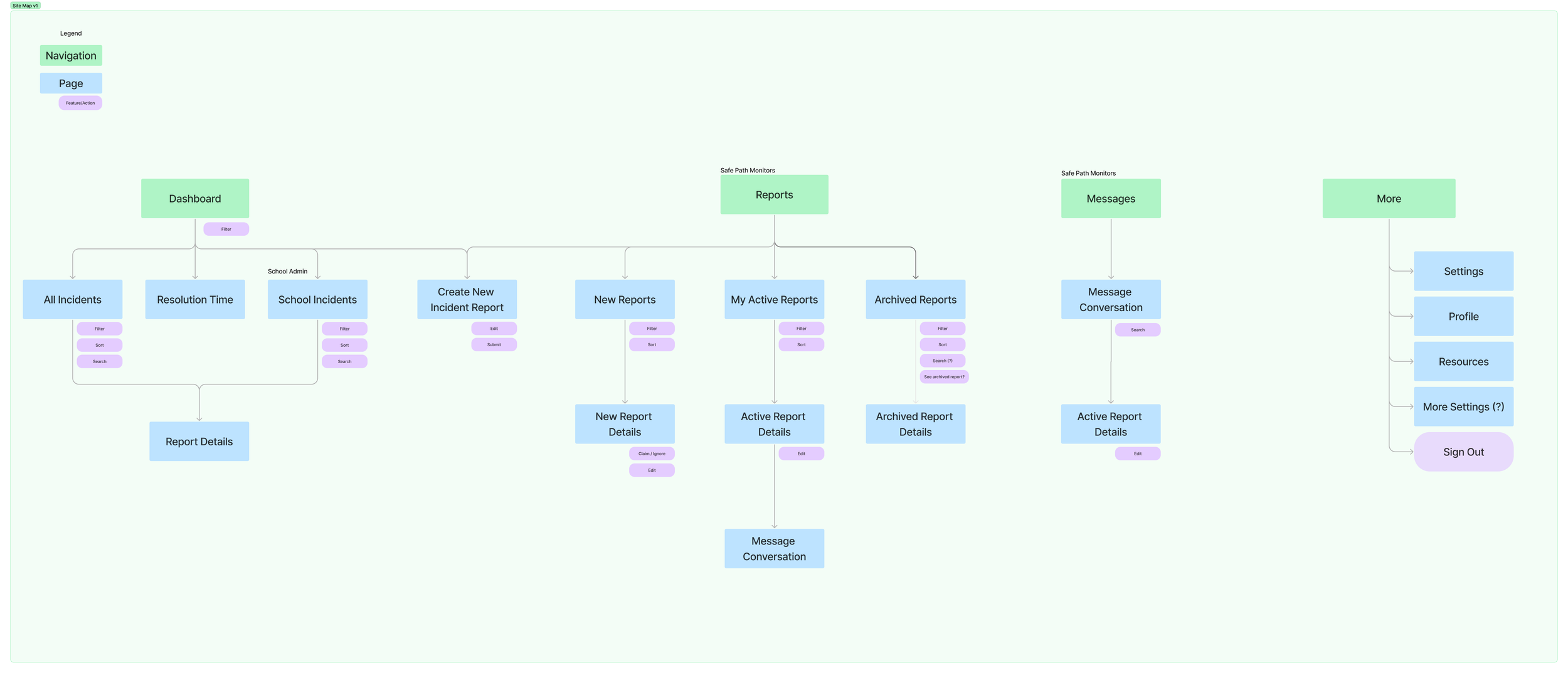
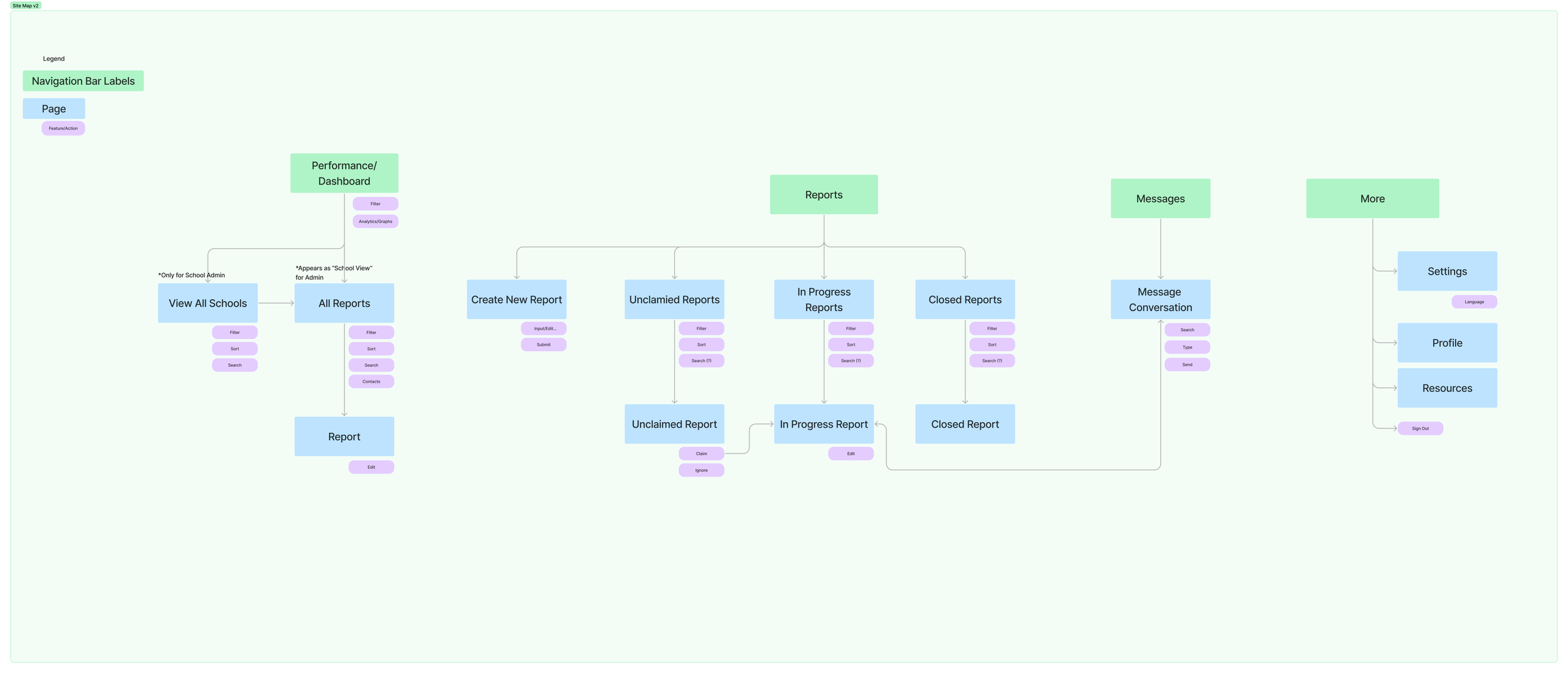
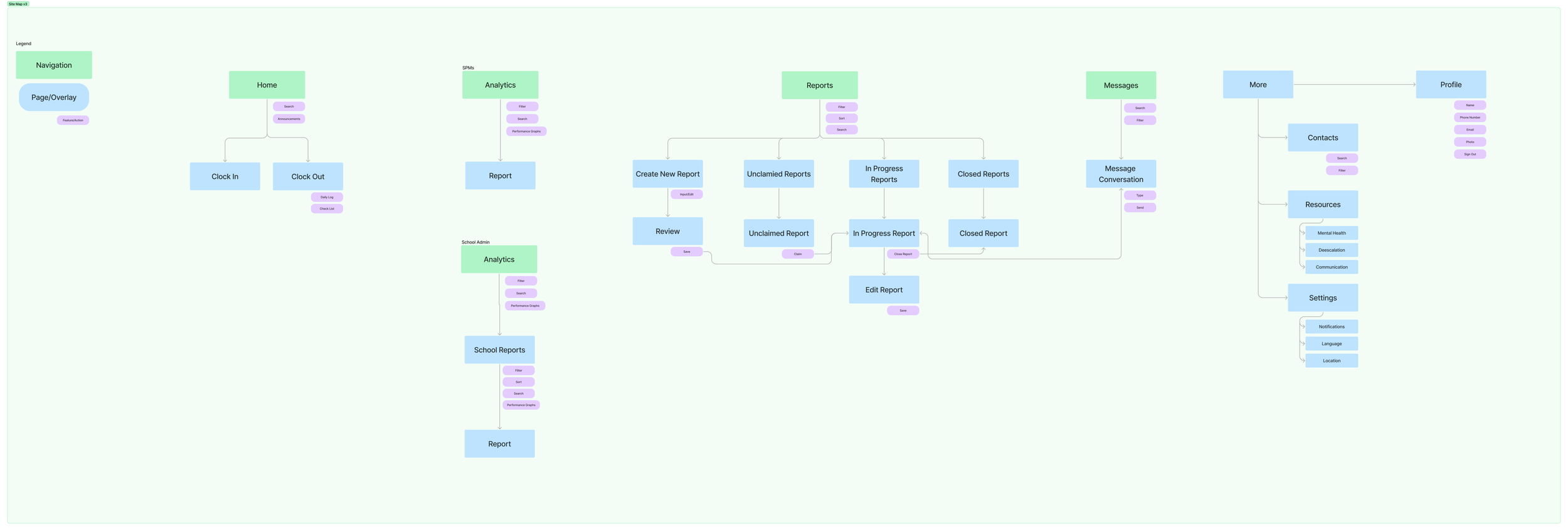
Key takeaways
The dashboard “home” should serve updates and analytics
Reports will include all incoming, in progress & closed incidents
Tip messaging will be accessible within each incident as well as collectively
The challenge of balancing anonymity and collecting detailed information
IDEATE
One of the main challenges was defining how individuals would send in tips for help while maintaining anonymity. We worked with the core team to map out tip reporting and incident report tracking.
submitting a TIPINCIDENT REPORTING FLOWSKey takeaways
Students & community members will text their tip to 1-800-PHILLY-TRUCE (instead of a downloadable app to maintain anonymity)
SMS tips will be sent directly to SPM app with all included details and option to message if needed
SPM app users will receive notifications for any new tips to encourage timely action
Building the main components for tracking and claiming reports
WIREFRAMES
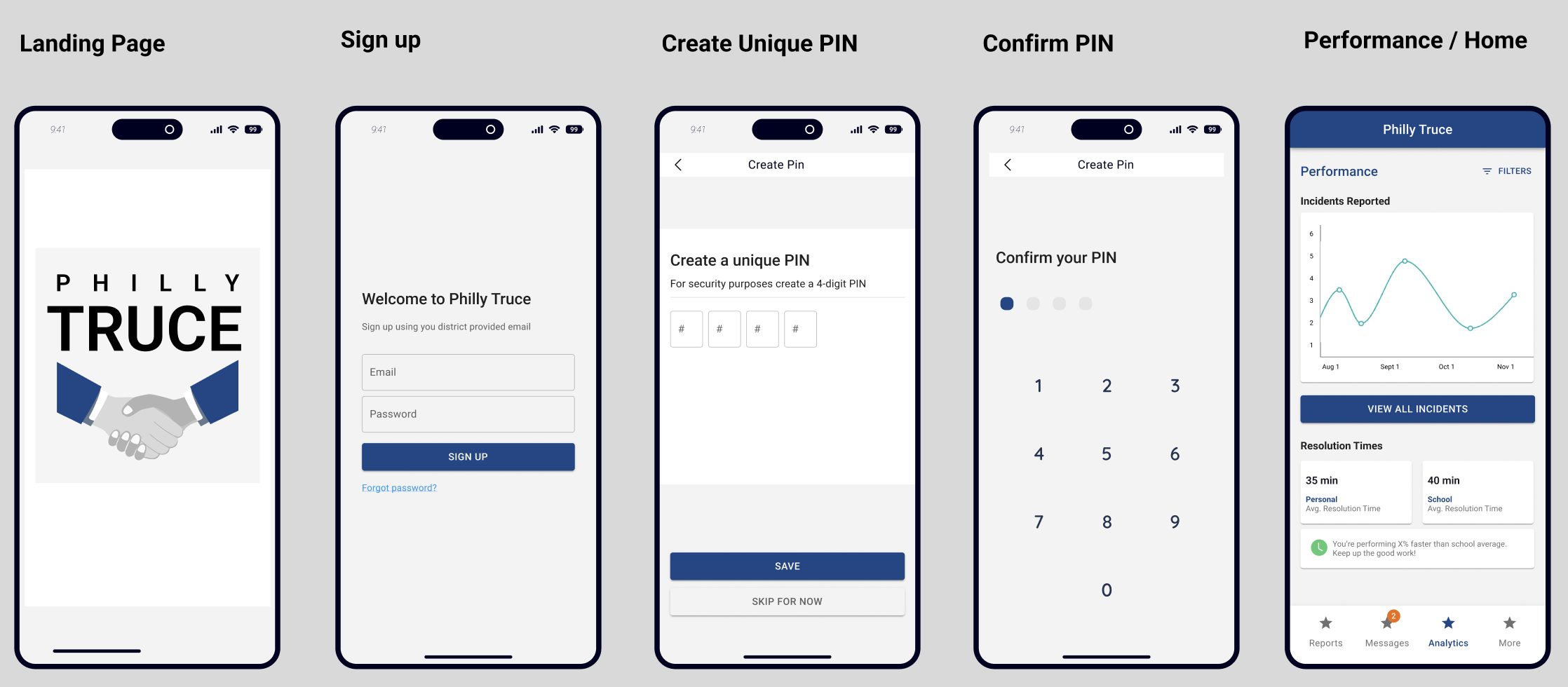
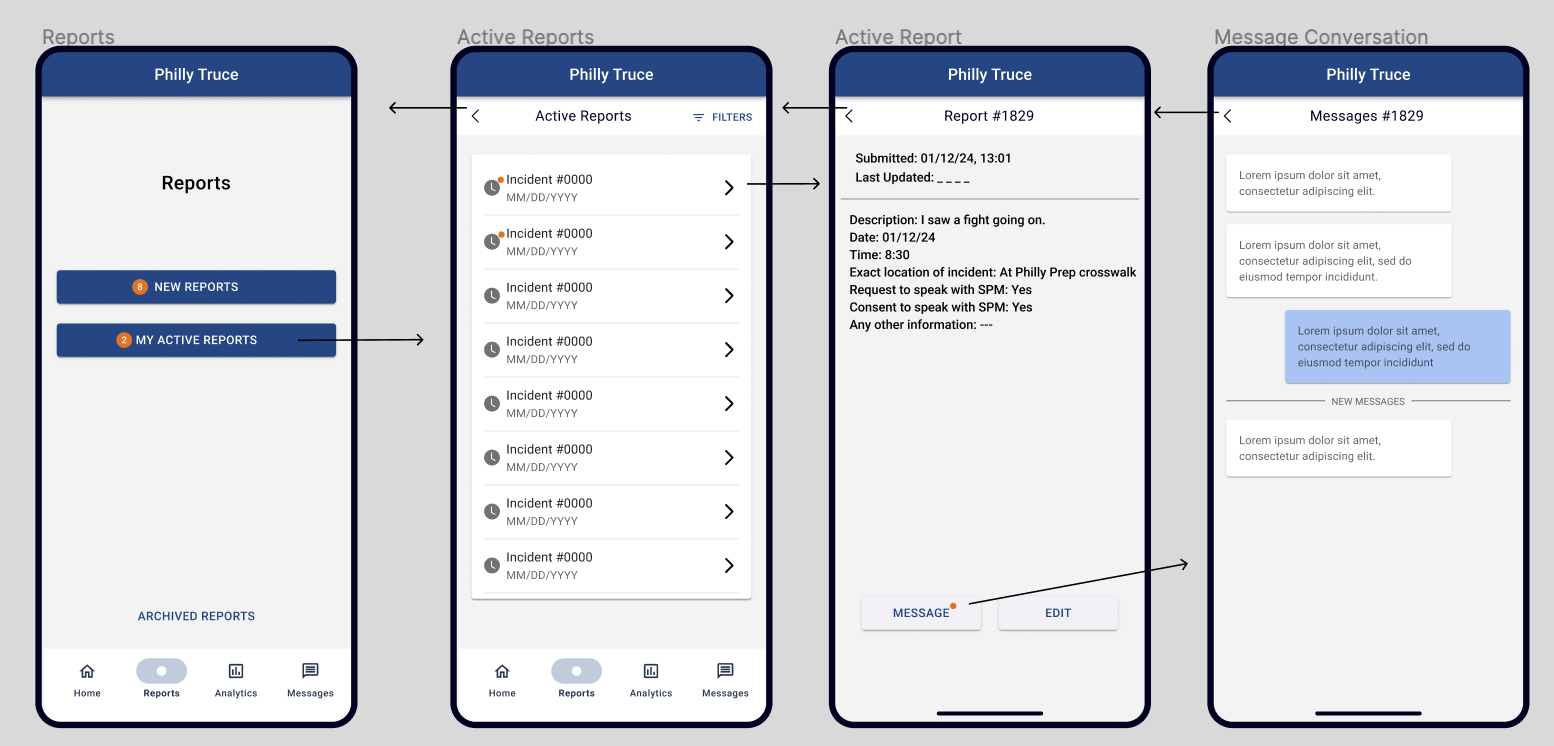
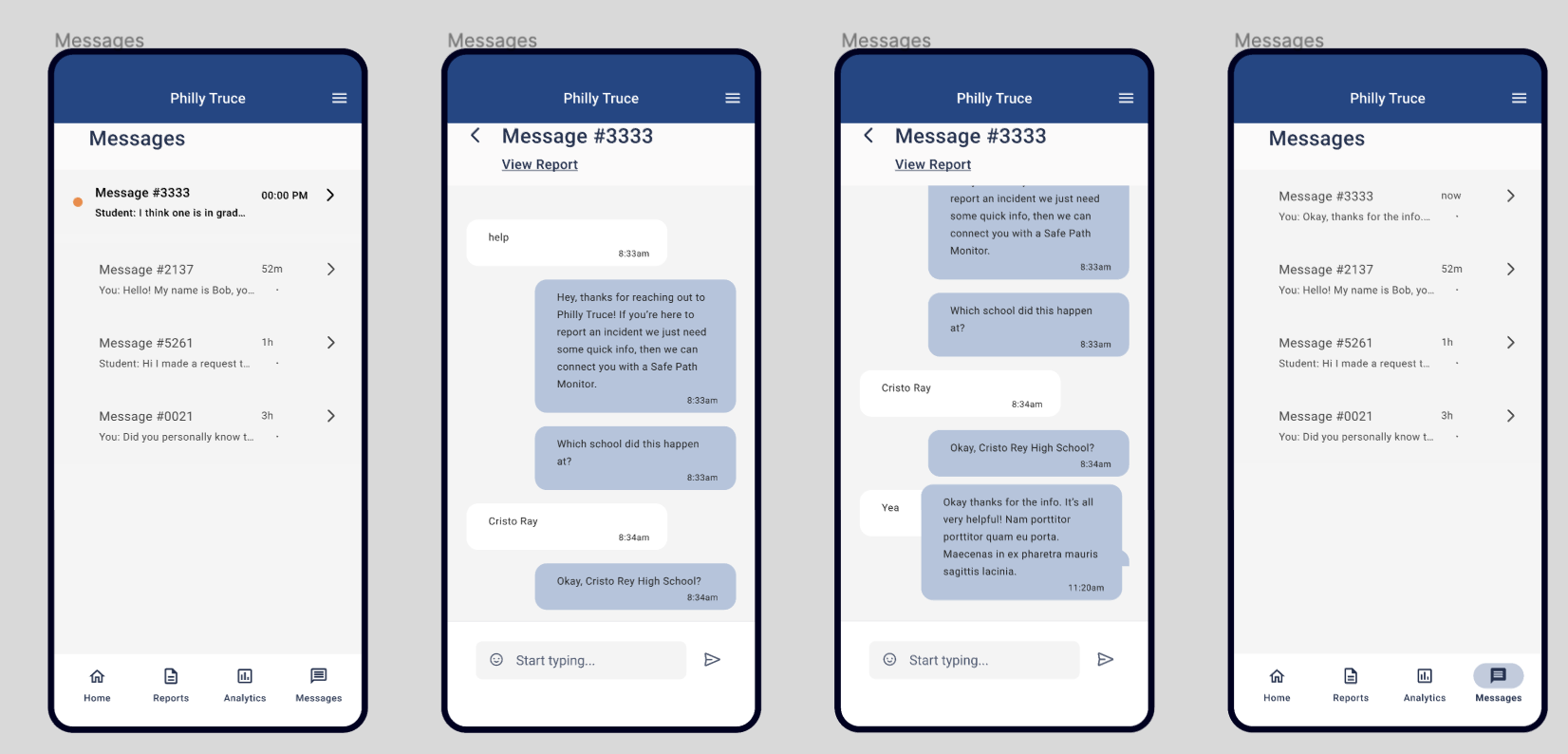
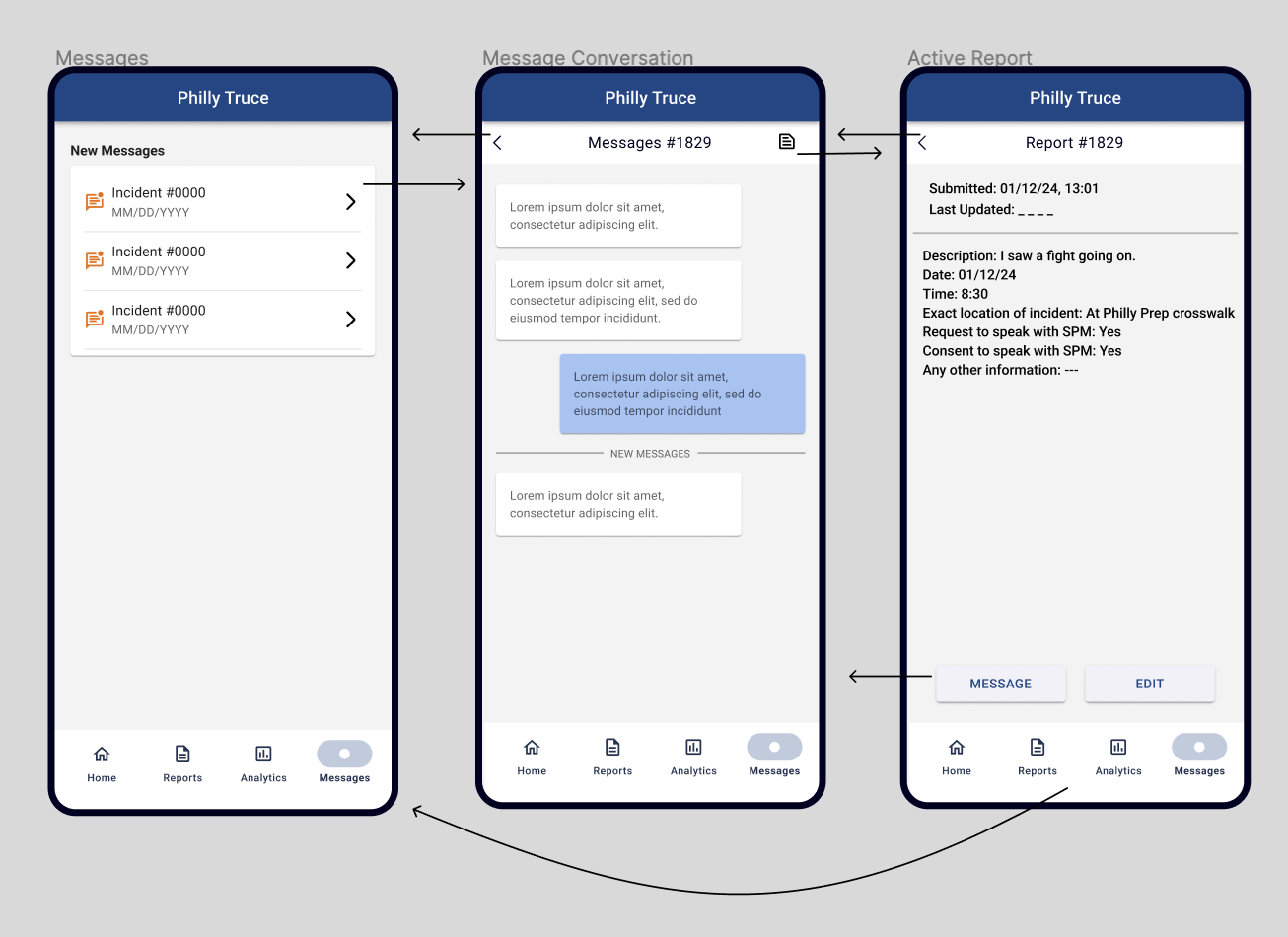
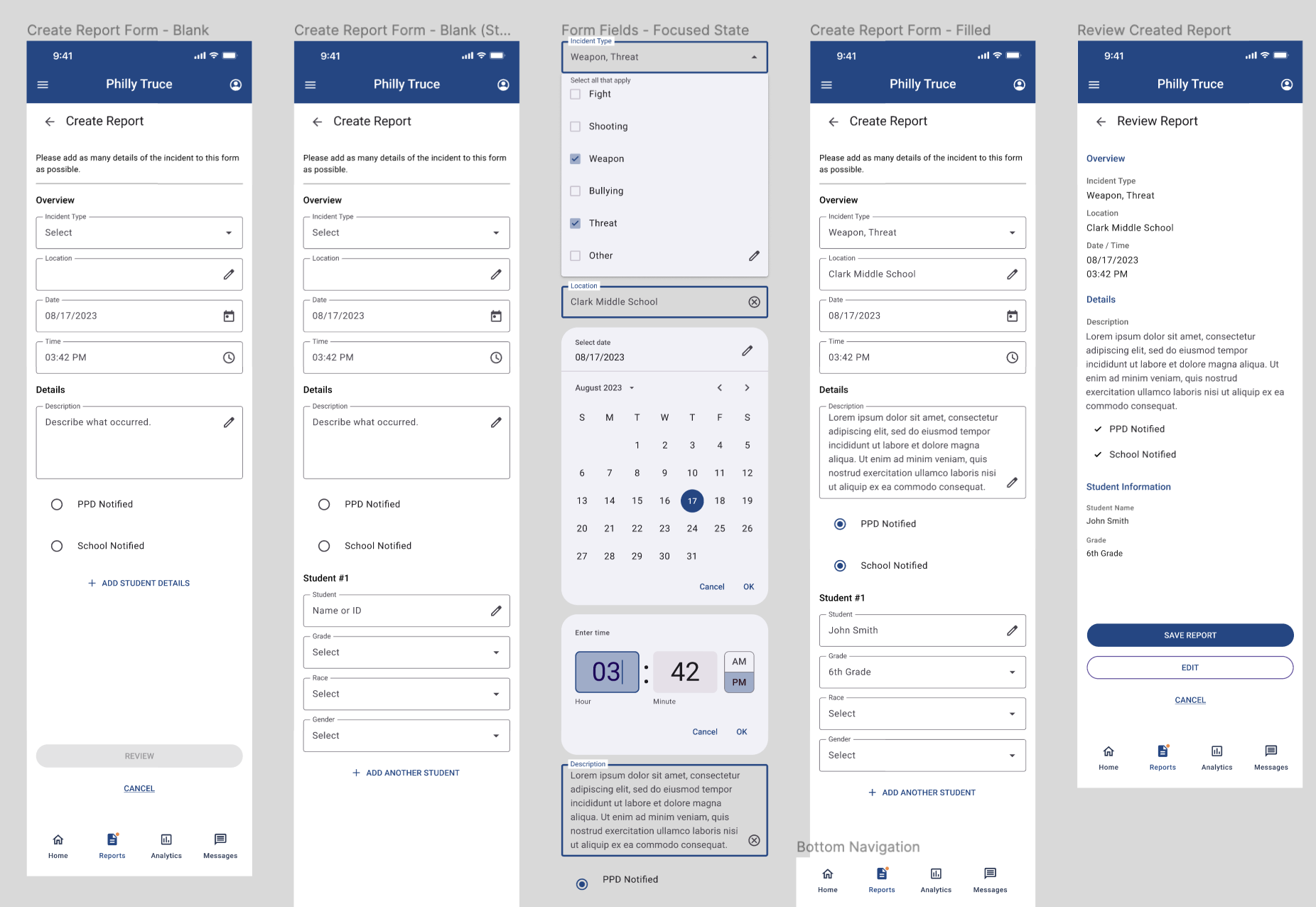
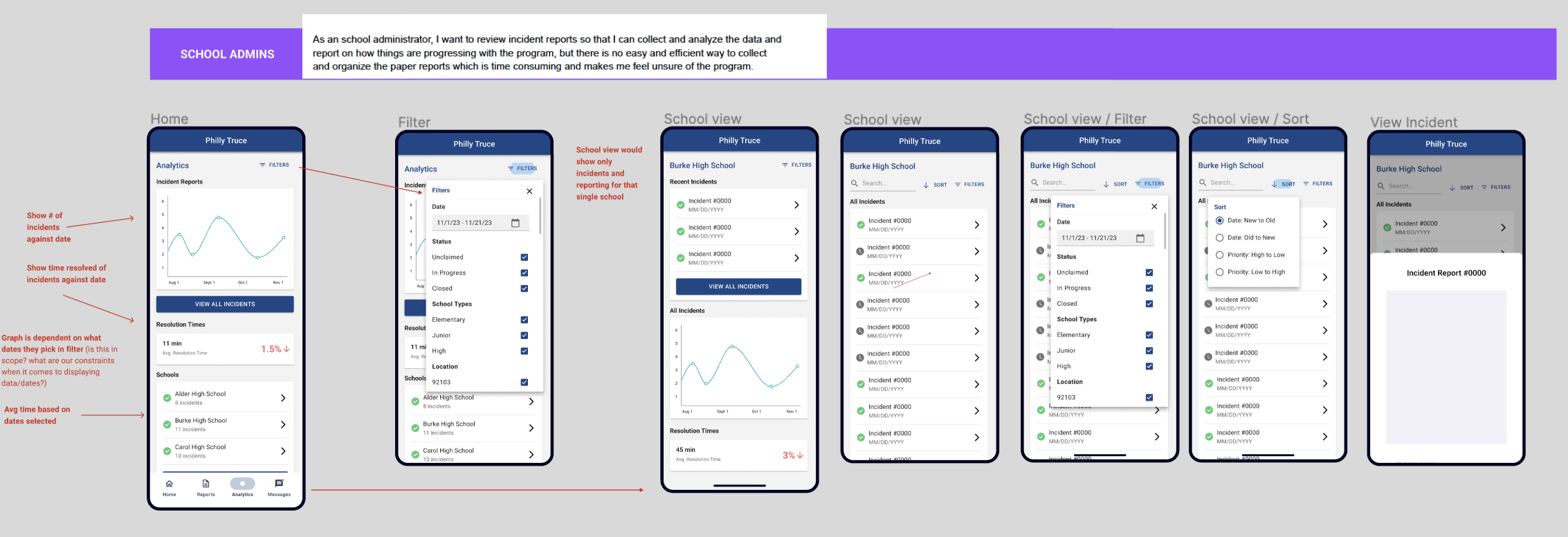
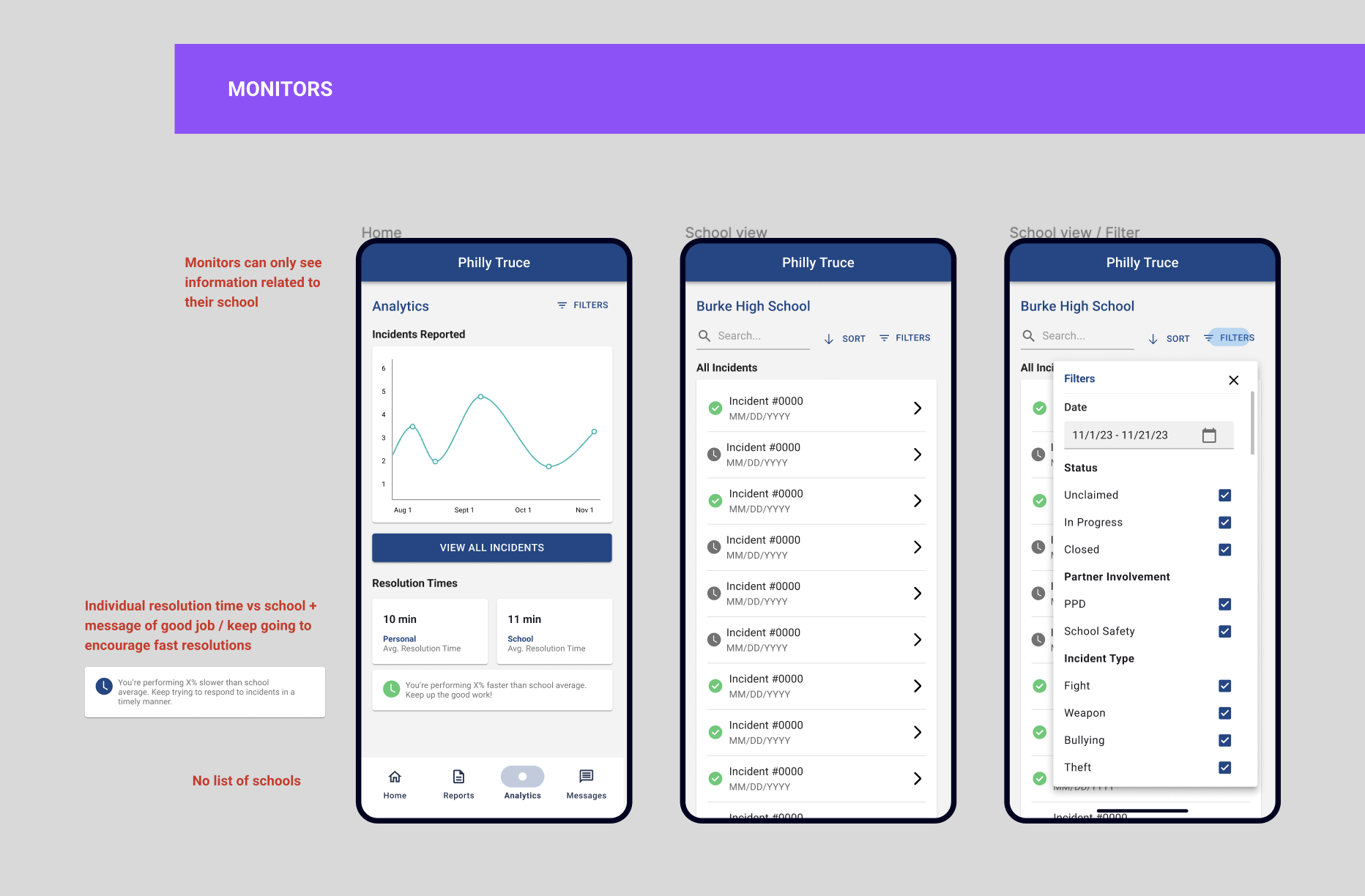
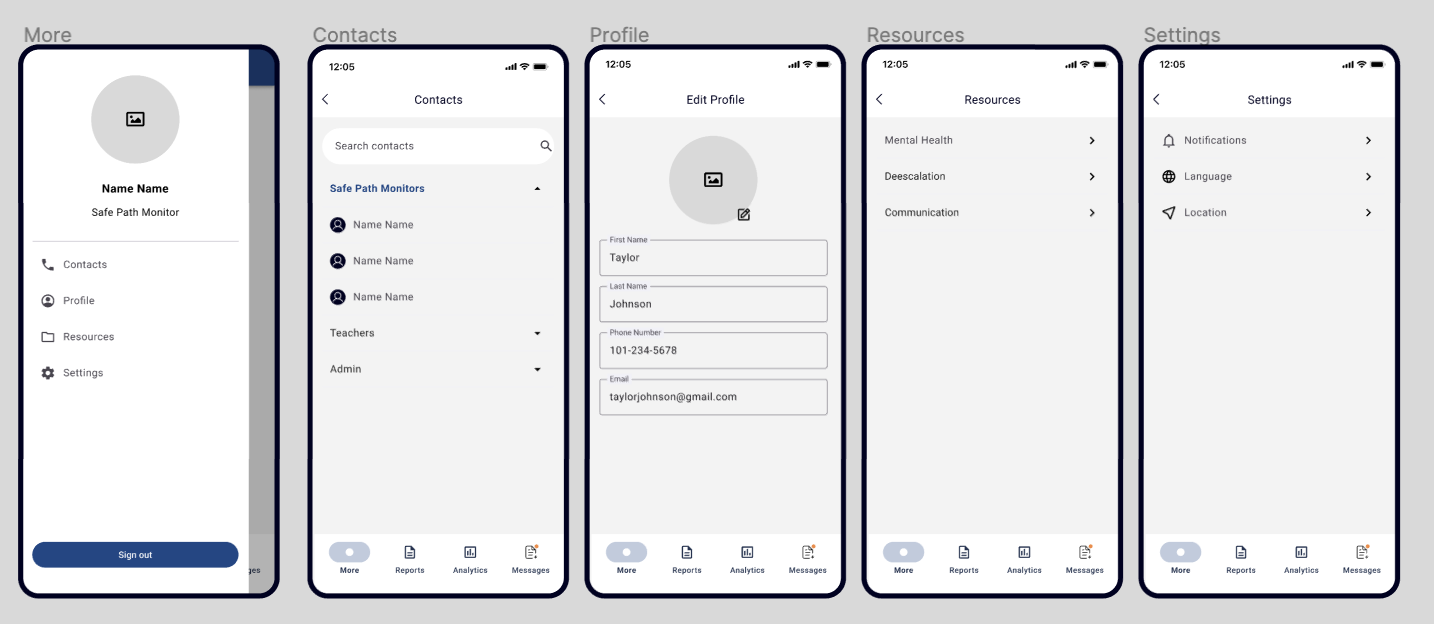
With our foundation set, we then focused on ensuring there was a streamlined connection from initial text tip to a safe path monitor reviewing, claiming & responding to the tip.
PROTOTYPE
Bringing it all together to ensure a complete flow from tip to resolution
Our design team then transferred our lo fi wireframes into an interactive prototype that we used to present to the core team and founders to validate direction. During this time, we iterated based on feedback, but formal usability testing will start fall 2024 for further validation.
LOG IN2 Factor Auth for security
Clock In / Clock Out
District announcements for large events & closings
Daily log to help with SPM shift transitions
claim REPORTs / messageReports (submitted tips) default as “unclaimed”
SPM claim reports so other SPMs know incident is being addressed
Claiming a report moves it to in progress
Once claimed, SPM can edit details & message student
CREATE REPORTAllow SPM to create new reports
Utilize drop downs to make the reporting process faster
Student details can be included (if given consent)
Review & editing capabilities
VIEW ANALYTICSAnalytics: # of incidents, time resolved by incident, average resolution time
Admin vs SPM view: Admins can see all reports across their district vs. SPMs can only see their claimed reports
MANAGE ACCOUNT Users can manage account details: name, number & email
Shortcuts for helpful resources & contacts
Designing for sensitive issues & real-world impact
CONCLUSION
Helping kids stay safe at schools, especially with gun violence on the rise, has been a rewarding challenge. As I learn more about the space and Philly Truce program, I’m even more dedicated to making a difference through this app. Our next phase for the project will start Fall 2024 with continued development and testing.
Challenges
School and program limitations
Deciding on web vs. native mobile app
Learnings
Providing feedback without prescribing a solution
Encouraging ideation within bounds of constraints
Looking Ahead
Development continues
Perform usability testing
Introduce new admin app



